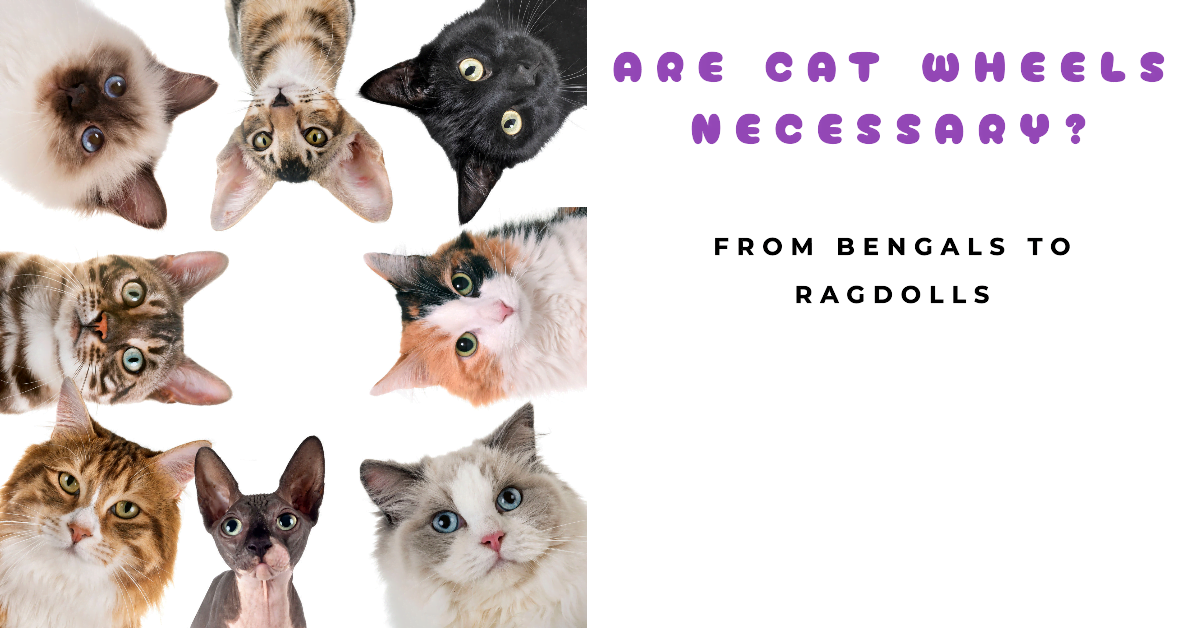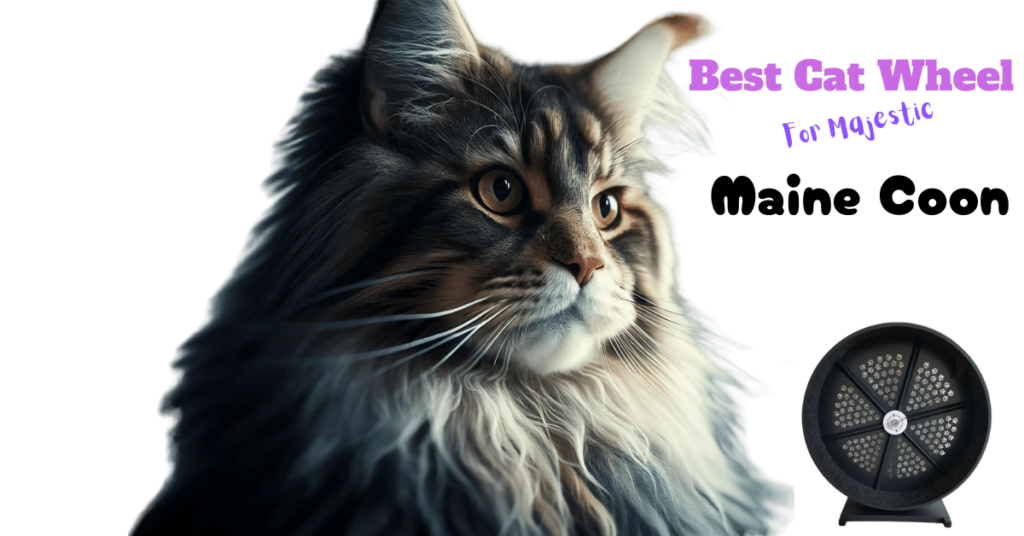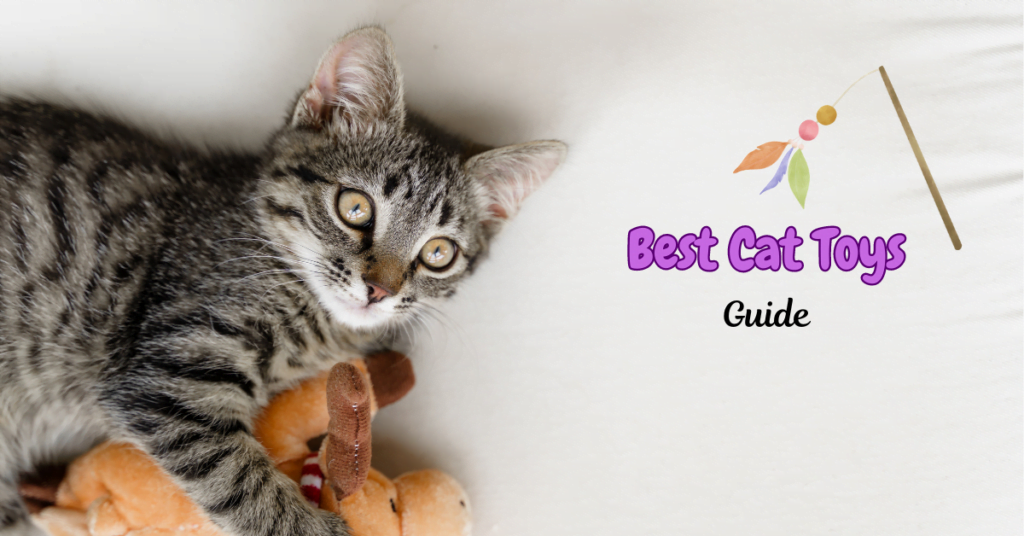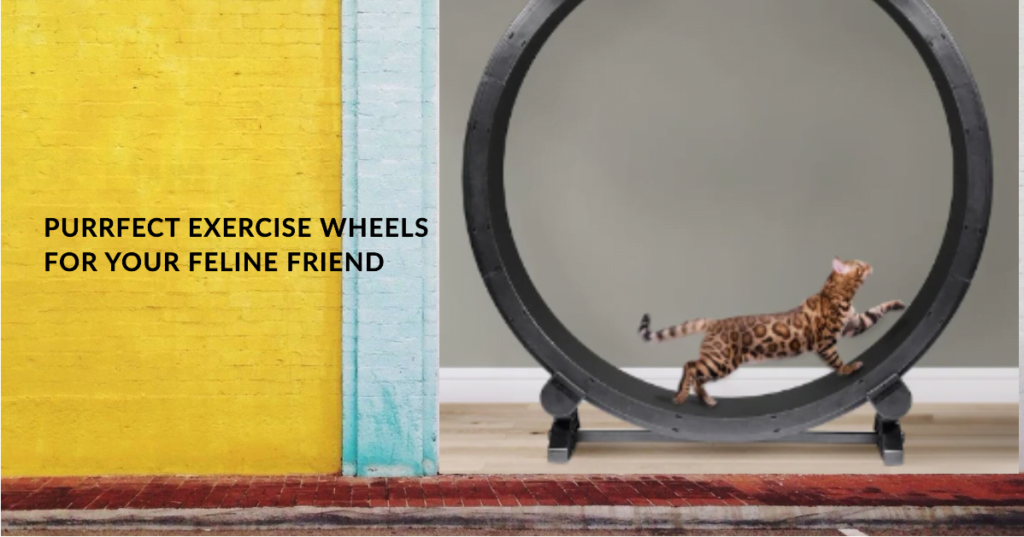This post contains affiliate links and I will be compensated if you make a purchase after clicking on my links.
Opening Thoughts: Are Cat Wheels Necessary?
Ever watched a cat sprint on a cat wheel and thought to yourself, Now that’s a feline marathon!? While not every kitty needs to hit the tread wheel to stay in top shape, for some high-energy felines, cat wheels are almost indispensable.
In this post, we’ll explore which cats might benefit most from these intriguing devices and dive into the specifics of how cat wheels can add zest and health to your cat’s life.
What Are Cat Wheels and How Do They Help?
Overview of Cat Wheels
A cat wheel, also known as a cat exercise wheel, is a large wheel designed for indoor use that allows cats to run on it as they would on a hamster wheel.
Primarily, these wheels serve two major purposes: physical exercise and mental stimulation. Regular use helps kitties keep off unnecessary weight and stave off boredom, which can lead to a variety of behavioral issues.
How Cat Wheels Work?
The mechanics behind cat wheels are fascinating yet straightforward. Constructed from durable materials like PVC or reinforced plastic, the wheel rests on a sturdy base that allows it to spin freely. As your cat steps forward, their movement propels the wheel, turning walking or running into a dynamic exercise session.
Space and Setup Considerations
- Size: Most cat wheels are about 3-4 feet in diameter, requiring a fair amount of space in your home.
- Location: Choose a quiet corner free from too much human traffic to avoid startling your cat while they’re using the wheel.
- Surface: Ensure the wheel’s surface is non-slip to keep your cat’s paws safe and secure during their run.
Quick Guide: Are Cat Wheels Necessary for Your Cat Breed?
| Breed | Description | Cat Wheel Necessity |
|---|---|---|
| 1. Bengals | High energy, needs intense activity | Very High |
| 2. Abyssinians | Playful, needs constant stimulation | High |
| 3. Siamese | Social, prone to boredom | High |
| 4. Maine Coon | Large, active | High |
| 5. American Shorthair | Balanced energy, enjoys play | Moderate |
| 6. Sphynx | Highly interactive, energetic | Moderate to High |
| 7. Persians | Prefers leisure, less active | Low |
| 8. British Shorthairs | Laid-back, low activity | Low |
| 9. Ragdoll | Moderately energetic | Low to Moderate |
| 10. Domestic Shorthair | Varies widely | Varies |
Are Cat Wheels Necessary for Your Cat? Detailed Insights by Breed
The necessity of a cat wheel can vary significantly depending on a cat’s breed, energy level, and personal habits. In this section, we explore in depth whether a cat wheel is essential for your furry friend, offering specific insights for each of the ten most common cat breeds.
High-Energy Breeds
1. Bengals
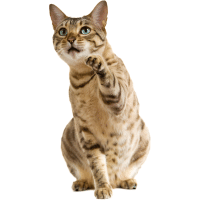
Bengals are renowned for their vibrant energy and spirited personalities, traits that can bring both immense joy and considerable challenge to their owners.
They require extensive physical activity to maintain their emotional balance and avoid potential behavioral issues, such as aggression. A cat wheel effectively mimics the expansive outdoor environments Bengals thrive in, providing the intense exercise they desperately need.
Cat Wheel Necessity: Very High (especially if indoor)
2. Abyssinians
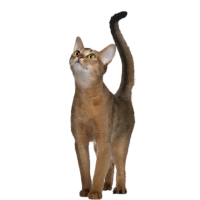
Abyssinian cats stand out among felines due to their energetic and playful nature, marked by an exceptional zest for life that captivates their human companions.
These cats are not only active and agile but also highly intelligent and perpetually curious, requiring constant mental and physical stimulation to stay content. The dynamic nature of cat wheels caters perfectly to their need for ongoing movement and exploration, making it an excellent tool to keep them engaged.
Cat Wheel Necessity: High
3. Siamese
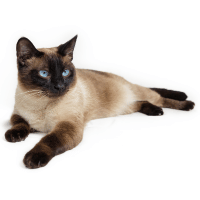
Siamese cats are highly social, trainable, and brimming with energy, making them delightful yet demanding companions. They thrive on engagement and can even be taught to play games like fetch, retrieving objects such as balls and toys.
However, their high energy levels also mean they can easily become bored, which might lead to destructive behaviors if they’re not properly entertained. A cat wheel offers a fantastic solution by providing continuous activity to keep them engaged and help manage their frequent meowing.
Cat Wheel Necessity: High
4. Maine Coon
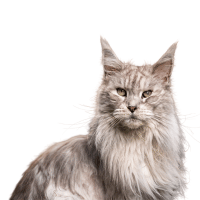
Maine Coons are not just one of the largest cat breeds; they are also among the most active and playful. Known for their intelligent and dexterous behavior, they require substantial physical activity to stay healthy and entertained.
Indoors, without sufficient exercise, they might resort to opening cabinets or turning on faucets to alleviate boredom. Considering their high activity levels and need for stimulation, providing a cat wheel for a Maine Coon can be highly beneficial.
Cat Wheel Necessity: High
Moderate-Energy Breeds
5. American Shorthair
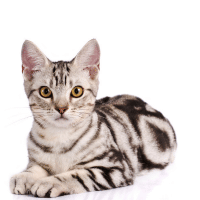
American Shorthairs, with their balanced energy levels, epitomize the middle-of-the-road temperament. Descendants of industrious mousers, they appreciate regular play sessions and are naturally inclined to explore, yet they’re just as happy to relax in a cozy nook.
While they relish occasional bursts of activity, traditional play generally satisfies their exercise needs. A cat wheel can offer additional enrichment and help in channeling their playful instincts, but it is not a necessity for keeping them content and healthy.
Cat Wheel Necessity: Moderate
6. Sphynx
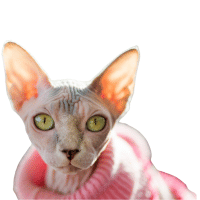
Sphynx cats, known for their dog-like loyalty and affectionate nature, are highly energetic and interactive. They thrive on companionship and active play, often engaging in games like fetch and enjoying simulated hunting activities.
Given their need for constant mental stimulation and physical activity, a cat wheel can be a superb investment to safely burn off their excess energy indoors.
Cat Wheel Necessity: Moderate to High
Low-Energy Breeds
7. Persians
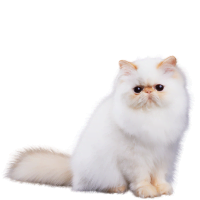
Persians generally favor leisure rather than exertion. For their modest activity needs, interactive toys or gentle play sessions usually suffice, reducing the necessity for cat wheels. Explore these alternative options to cat wheels that can keep them entertained and engaged.
Cat Wheel Necessity: Low
8. British Shorthairs
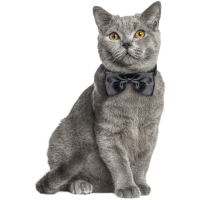
Known for their laid-back and easygoing nature, British Shorthairs may not frequently engage with a cat wheel. Typically, less intensive toys such as soft puzzles and gentle teaser toys are sufficient to satisfy their activity needs, keeping them content and healthy.
Cat Wheel Necessity: Low
Other Common Breeds
9. Ragdoll
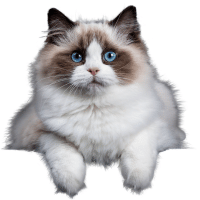
Ragdolls are moderately energetic and value their playtime, yet they are not excessively active. Due to their sociable yet calm nature, a cat wheel is not essential for them. They are often perfectly happy with simpler and less intense forms of play that still engage their minds and keep them active enough to maintain a healthy weight.
Cat Wheel Necessity: Low to Moderate
10. Domestic Shorthair
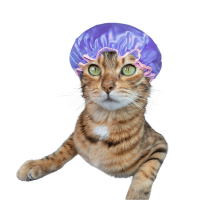
Domestic Shorthairs represent the rich tapestry of the cat world, often described as the “mutts” due to their varied lineage. This diversity results in a wide array of colors, markings, and most notably, personalities—from playful and energetic to calm and subdued.
Given this spectrum of traits, the necessity for a cat wheel varies significantly among individuals. Active Domestic Shorthairs might find a cat wheel an excellent source of stimulation and exercise, while those with a more laid-back nature might be perfectly content with simpler, less demanding play activities.
Cat Wheel Necessity: Varies
Exploring Alternatives for Less Active Breeds
Interactive Toy Recommendations
Not every cat requires the vigorous exercise that a cat wheel offers. For our more sedentary feline friends, such as Persians and British Shorthairs, there are plenty of engaging alternatives:
- Interactive Toys: Consider puzzle feeders that challenge them to solve a puzzle for food, or motorized toys that mimic the movement of prey. These can keep a cat mentally stimulated and physically active without overwhelming them.
- Play Sessions and Cuddling: Combine short play sessions with cuddle time or gentle training exercises like ‘come when called’. This not only keeps them active but also strengthens your bond.
- Benefits: These lighter activities can help maintain a healthy weight and prevent the boredom-related behavioral issues that can arise in less active cats.
DIY Solutions
For cat owners who enjoy a bit of creativity, DIY projects can be both fun and functional:
- Homemade Toys: Use common household items to create intriguing toys. A cardboard box with holes cut out can become an exciting maze, and feather strings hanging from sticks can simulate hunting play.
- Games: Simple games designed to stimulate their natural hunting instincts can be created with items like laser pointers or light balls.
- Benefits: These homemade alternatives provide ample stimulation for less active breeds, ensuring they remain engaged and healthy without needing the intense activity of a cat wheel.
Making the Right Choice for Your Cat
Assessment Tips
Choosing whether to invest in a cat wheel involves understanding your cat’s unique needs beyond just their breed:
- Breed and Personality:
- Breed: Certain breeds inherently benefit more from a cat wheel due to their high energy and agility, as we’ve discussed in detail earlier.
- Personality: Individual personality traits can significantly influence a cat’s enthusiasm for activities like using a cat wheel.
- Age, Health, and Temperament:
- Age: Younger cats typically have more energy to burn and may find a cat wheel invaluable for staying engaged and healthy. Conversely, older pets might prefer less strenuous activities.
- Health: Consider any health issues that might affect their ability to safely use a cat wheel. Ensuring the activity is suitable for their physical condition is crucial.
- Temperament: A cat’s general disposition can also play a role in how likely they are to use a cat wheel. More active and curious cats may be more inclined to use the wheel, while more reserved cats might not engage as much.
Purchase Advice on Choosing the Right Cat Wheel
If you decide a cat wheel might be right for your cat, here are some factors to consider:
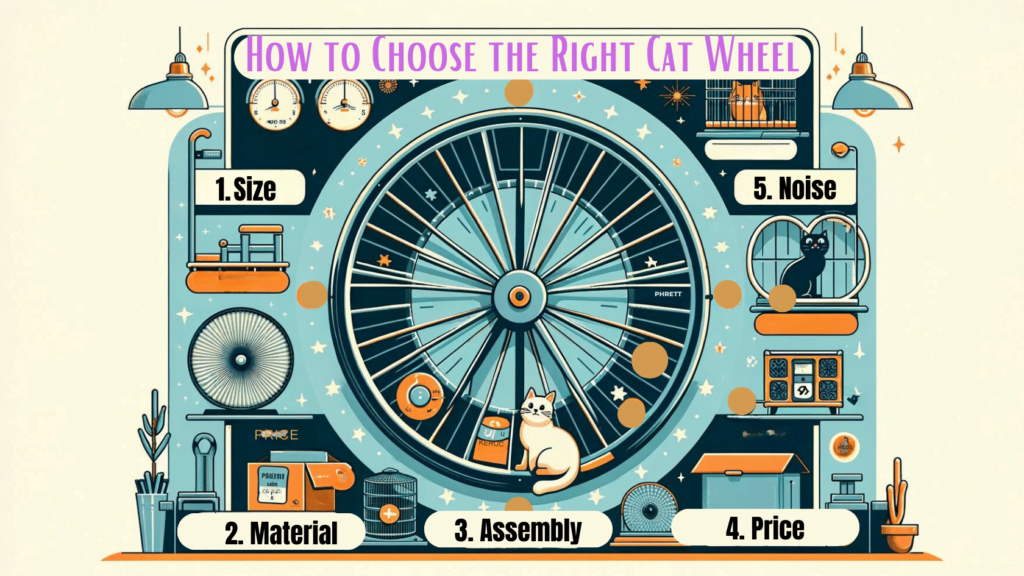
- Size and Type: Ensure the wheel is sufficiently large to allow your cat to use it comfortably and safely. Utilize our Cat Wheel Size Calculator to find the perfect fit.
- Safety Features: Look for wheels with a stable base and non-slip surface to prevent accidents.
- Quality and Durability: Choose a wheel that can withstand the rigors of regular use by an active cat.
Cat Wheel Verdict: Necessary or Nice-to-Have?
While cat wheels can provide significant benefits for certain feline personalities and breeds, they are not necessary for all. Understanding your cat’s individual needs is crucial to deciding whether this tool is a worthwhile addition to your home.
Does your sprinter have their running shoes on, or do they prefer a leisurely stroll around the living room?
Meet Sean, a fintech whiz with a penchant for pet purrs and blockchain buzz. After a decade of fintech feats, Sean’s tech talents leaped from ledger lines to litter lines, driven by a passion for pets and a vision for a more connected pet care community. With three critter companions as co-pilots, Sean launched this blog to share a treasury of pet-friendly tech tips and tales.

